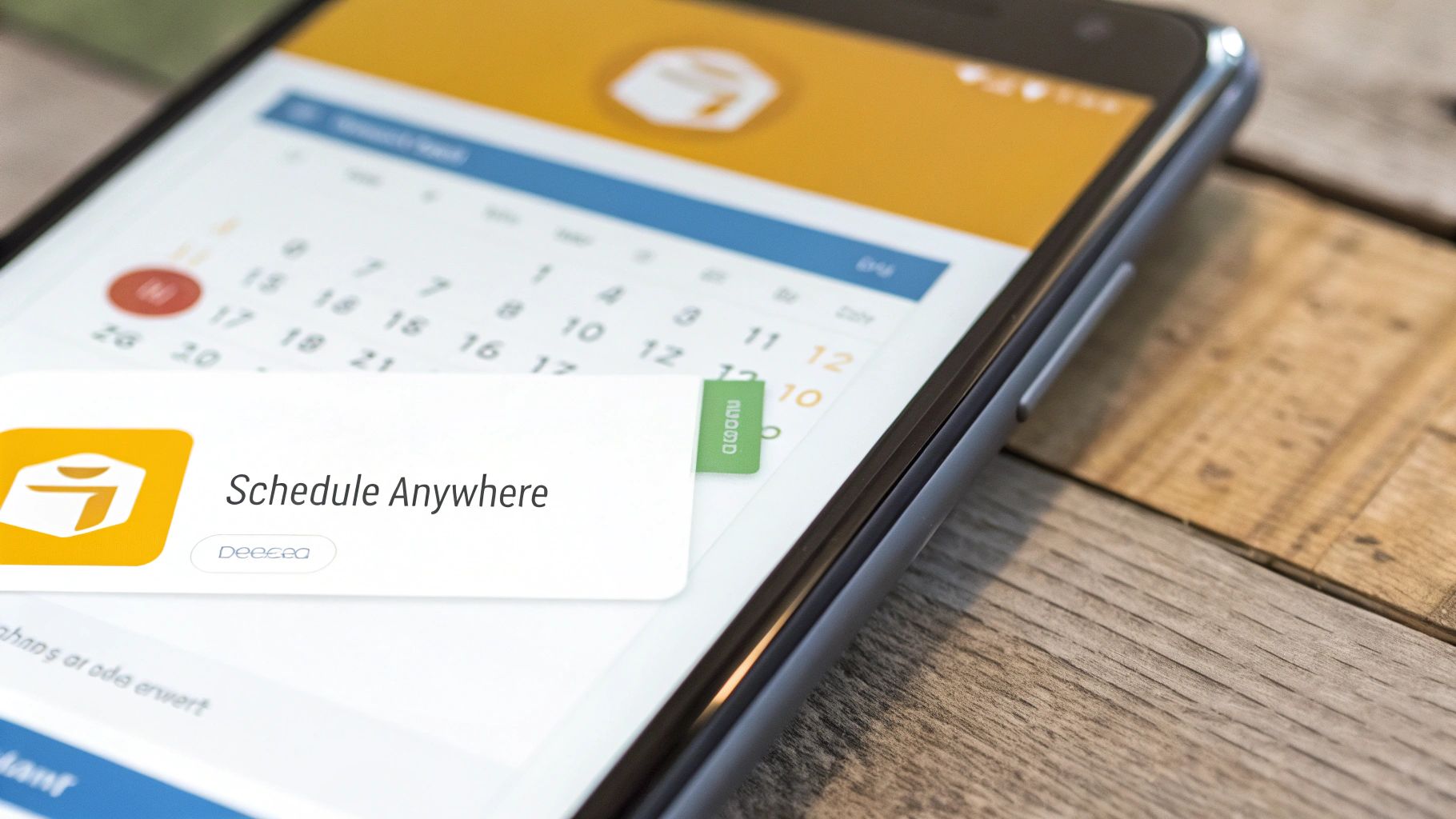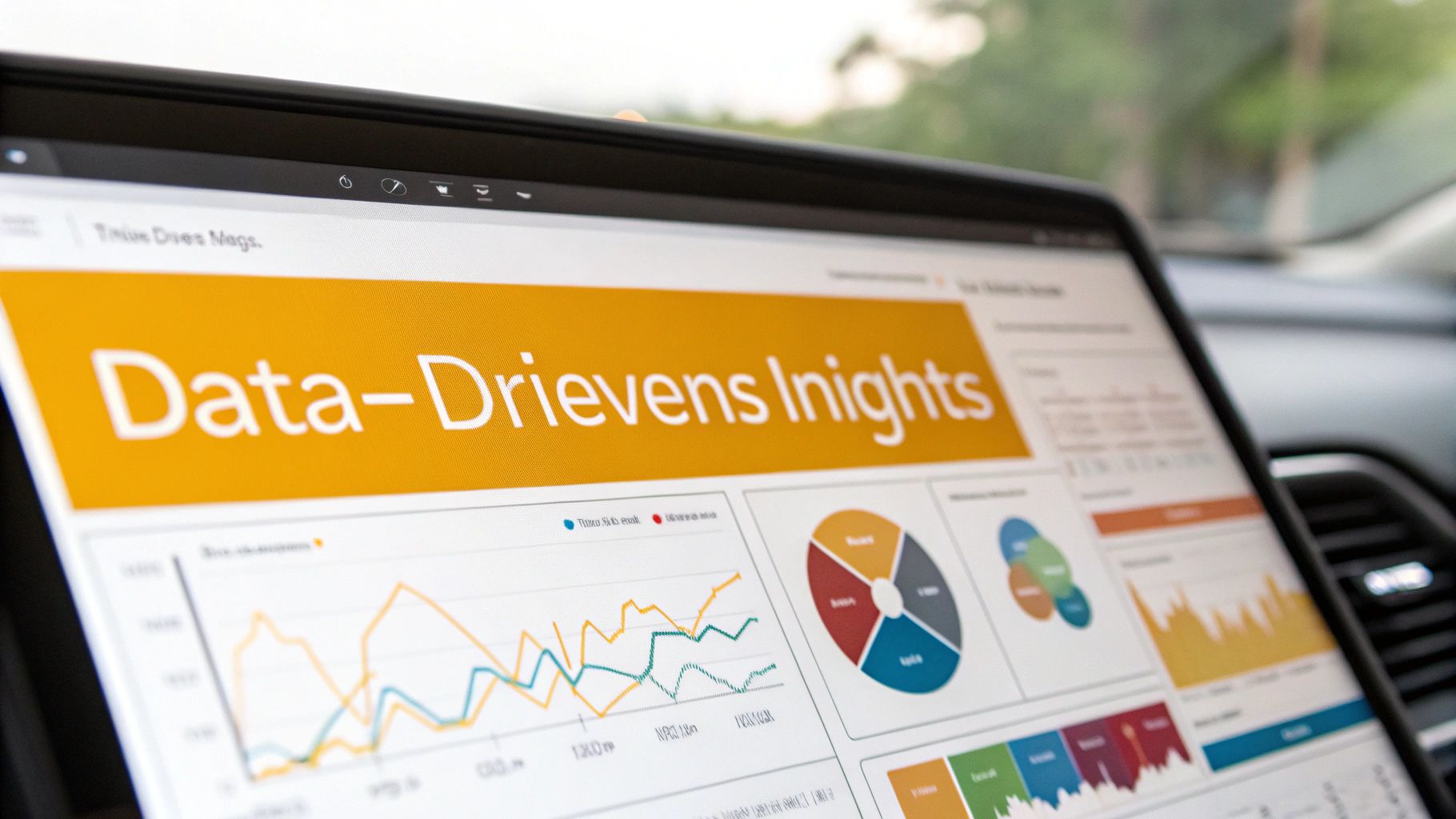From our resource library for organizational scheduling and management.
The Ultimate Guide to Employee Scheduling Applications: Streamline Your Workforce Management

The Growing Impact of Employee Scheduling Software

Many businesses today wrestle with complex workforce management challenges. From juggling different work schedules to handling remote teams and changing business demands, companies need better ways to organize their staff. Employee scheduling software helps solve these challenges by providing smart tools that make workforce planning easier and more efficient.
The shift to digital scheduling isn't just about following trends - it reflects real business needs. Companies want to be quick and responsive while giving their teams more control over their work hours. This growing need explains why the market for scheduling software is expanding rapidly. Recent research shows the market was worth $0.5 billion in 2023 and is expected to reach $1.3 billion by 2032, with an 11.5% yearly growth rate from 2024 to 2032. This growth comes from businesses needing better ways to control costs, follow labor laws, and handle more complex work arrangements. Find more detailed statistics here
Benefits Across Various Industries
Different industries are seeing clear benefits from these scheduling tools. Retail stores use them to make sure they have enough staff during busy shopping hours, which helps reduce customer wait times and boost sales. In healthcare settings, where precise scheduling is crucial for patient care, these tools help manage complex shift patterns and ensure proper coverage. This improved scheduling leads to better patient care and fewer mistakes from staffing mix-ups.
Employee Satisfaction and Empowerment
These scheduling tools do more than help managers - they give employees more control over their work life. Features like shift swapping and mobile access let workers adjust their schedules more easily, helping them balance work and personal life better. This flexibility often leads to happier employees who stay with the company longer. The tools also make it easier for team members to talk to their managers about scheduling needs, which creates a better work environment and helps teams work together more effectively. By giving both managers and employees better tools to handle scheduling, these systems help create more organized and positive workplaces.
Essential Features That Drive Operational Excellence
Modern employee scheduling software helps organizations do much more than just create basic work schedules. Here are the key features that make these tools essential for effectively managing today's workforce.
AI-Powered Scheduling and Real-Time Availability
The addition of AI schedule generation has transformed how managers create staff schedules. By analyzing factors like past scheduling data, when employees can work, and expected busy periods, AI creates optimized schedules in minutes rather than hours. Managers can now focus on other important work instead of spending excessive time on scheduling. The real-time availability features also let staff quickly update when they can work, giving managers accurate information for creating schedules that work for everyone.
Predictive Analytics and Shift Optimization
Smart scheduling tools now use predictive analytics to help businesses plan better. By studying patterns in historical data, the software can forecast when you'll need more or fewer staff members working. This helps prevent scheduling too many or too few people for each shift. Many systems also include shift swapping capabilities, where employees can trade shifts with each other (with manager approval). This gives staff more control over their schedules while making it easier for managers to handle schedule changes. Learn more in our guide: How to master shift scheduling.
Integrated Time Tracking and Mobile Accessibility
Most scheduling systems now include built-in time tracking tools. Staff can clock in and out directly through the app, which makes payroll much simpler and reduces administrative work. This also provides clear data about actual hours worked, helping with labor cost planning and budgeting. Mobile access is another must-have feature - employees can view schedules, request time off, swap shifts, and message coworkers from their phones anytime. These tools work together to create scheduling systems that save time and effort for both managers and employees.
Implementing Your Scheduling Solution Successfully

Switching to a new scheduling system takes careful planning. It's a significant change that affects everyone from managers to frontline staff. Getting it right means bringing people along from the start and addressing their questions openly.
The numbers tell an important story - 70% of companies struggle when rolling out new software. The main reasons? Staff resistance and lack of support from leadership. But when employees find the system helpful and easy to use, it boosts both satisfaction and productivity. Want to learn more? Check out this guide on successful scheduling software adoption.
Building a Solid Implementation Plan
A good rollout starts with clear planning. Here's what to focus on:
- Set specific goals: What exact improvements do you want to see? Make them measurable and realistic.
- Find your key players: Who will use the system most? Get input from different teams and roles.
- Plan your communications: How will you keep everyone updated? Regular check-ins help people feel informed.
- Map out training: What's the best way to help your team learn? Mix hands-on practice with easy-to-find help resources.
Addressing Resistance and Ensuring Buy-In
Most people naturally hesitate when facing workplace changes. Here's how to help them adjust:
- Start early conversations: Ask for feedback before the switch. When people feel heard, they're more likely to support the change.
- Show real benefits: Explain exactly how the new system will make work easier - like faster scheduling and better team communication.
- Keep help available: Have a support team ready and share clear guides. Quick answers to questions prevent frustration.
Training and System Integration
Good training makes all the difference in adoption. Consider these approaches:
- Match training to roles: Focus on what each person needs to know. Managers might need deep system knowledge, while staff need basics for daily use.
- Mix learning styles: Offer different ways to learn - video guides, practice sessions, and written steps.
- Connect your tools: Make sure the new system works smoothly with your existing HR and payroll setup.
A careful approach to implementation helps your whole team succeed with the new system. For more insights, see this guide on improving operations with modern scheduling tools. These steps help ensure your employee scheduling application becomes a valuable tool that makes work better for everyone.
Unlocking Smart Workforce Planning Through Data Analytics
Modern scheduling software goes beyond just assigning shifts - it provides valuable insights that can transform how you plan your workforce. When used effectively, this data helps businesses shift from gut-feel decisions to clear, fact-based planning. The result? Lower labor costs, better service, and more satisfied staff.
Finding Key Patterns in Your Schedule Data
Your employee scheduling software captures essential data points like staff availability, shift changes, extra hours worked, and attendance records. These numbers tell important stories. You might discover certain shifts regularly need overtime coverage, or notice higher absence rates during specific periods. By examining these trends closely, you can spot and fix underlying problems - whether that means adjusting staff levels during busy times or creating new programs to support employee wellbeing and reduce callouts. Understanding these patterns helps you build better schedules.
Getting Staffing Numbers Right with Data
One major advantage of analytics in scheduling tools is accurate staff planning. The software analyzes past data to predict how many people you'll need at different times. This helps you avoid having too many staff on duty (which wastes money) or too few (which hurts service quality and puts pressure on your team). Good forecasting creates balanced schedules that work for both the business and employees.
Creating Smart Dashboards for Better Results
Most scheduling platforms let you build custom data views. These dashboards show key scheduling metrics at a glance, making it easy to track workforce performance. You might monitor things like labor costs versus revenue, overtime trends, or how satisfied employees are with their schedules. Regular checks on these numbers help you spot areas to improve and adjust your approach quickly. This ongoing fine-tuning keeps your scheduling aligned with business goals. Plus, having clear data makes it easier to show others how scheduling choices affect results.
Transitioning From Manual to Digital Scheduling Systems

Making the switch from paper schedules and spreadsheets to an employee scheduling application might seem daunting at first. But with some planning and the right mindset, this change can make scheduling much easier and more efficient. Let's look at how to make this transition work for your team.
Evaluating Your Current Scheduling Process
Take an honest look at how you handle scheduling now. What frustrates you most? Maybe you're spending hours each week making schedules by hand. Perhaps employees keep missing shift changes, or you struggle to track time-off requests. Understanding these pain points will help you pick software that actually solves your problems. For instance, if last-minute changes cause chaos, look for an app with quick updates and instant notifications.
Identifying Areas for Improvement with an Employee Scheduling Application
After spotting the weak points in your current system, you can see exactly how scheduling software could help. These tools can handle many tedious tasks automatically - from creating weekly schedules to tracking who's available when. They also catch common mistakes like double-booking staff or scheduling beyond overtime limits. The need for better solutions is clear: 38% of U.S. workers still use old-school methods like punch cards, while in Canada that number reaches 58%. Even more concerning, nearly 10% of U.S. business owners admit to changing employee timesheets. See more stats here: Employee Scheduling Statistics.
Managing the Change Effectively
Getting your team on board with new software takes careful planning. Be upfront about why you're making the switch and how it will make everyone's job easier. Give your staff plenty of chances to learn the new system - some might prefer video tutorials, while others need hands-on training. Just remember that buying the software is only step one. Want more guidance? Check out Staff Scheduling Programs: Your Ultimate Guide.
Overcoming Common Challenges
Moving to new software often comes with speed bumps - like getting all your data moved over correctly or helping reluctant staff adapt. Plan ahead for these issues. Make sure you have a solid process for transferring scheduling data without mistakes. Listen to your team's concerns and show them real examples of how the new system makes their jobs better. When you tackle these challenges directly, you'll get much better results from your new scheduling tools.
Building a Future-Ready Scheduling Strategy

Smart scheduling means looking ahead, not just meeting today's needs. Many companies now use artificial intelligence (AI), machine learning, and predictive analytics to plan their workforce schedules. These tools help companies stay flexible and prepare for what's coming next.
The Power of Predictive Analytics
Think of predictive analytics as a crystal ball that uses real data. For restaurants, this means looking at past sales, local events, and even weather to know how many staff they'll need. When managers use data instead of guesswork, they save money and keep service quality high. The best part? The more data they collect, the better their predictions become.
AI and Machine Learning Make Scheduling Easier
Gone are the days of spending hours making employee schedules by hand. Modern scheduling software can create draft schedules and suggest the best shift patterns automatically. These systems get smarter over time - they learn from each schedule they make, getting better at matching business needs with employee preferences.
Making Room for Remote Work
Work looks different now. More people want to work from home or have flexible hours. Good scheduling software lets employees set their availability, ask for time off, and trade shifts with coworkers - all through one simple system. This makes life easier for both employees and managers.
Creating a Schedule System That Works
A good scheduling system needs these key pieces:
- Clear Rules: Make sure everyone knows how scheduling works
- Regular Check-ins: Look at your scheduling data often to spot problems early
- Connected Tools: Your scheduling system should work smoothly with your payroll and HR software
- Listen to Feedback: Ask employees what's working and what isn't
When you put these pieces together, you get a scheduling system that works well now and can adapt as your needs change.
Want to make scheduling easier for your team? Acroroster can help you build a better scheduling system that works for everyone. Check out our platform to see how we can help.